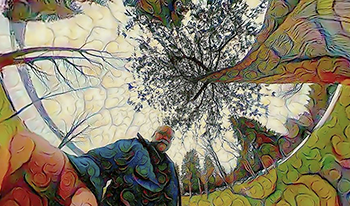Back to articles
Regular Articles
Volume: 4 | Article ID: jpi0421-edi

From the Editors
DOI : 10.2352/J.Percept.Imaging.2021.4.2.020101 Published Online : March 2021
Journal Title : Journal of Perceptual Imaging
Publisher Name : Society for Imaging Science and Technology
Subject Areas :
Views 54
Downloads 9
Cite this article
Bernice Rogowitz, Thrasos Pappas, "From the Editors" in Journal of Perceptual Imaging, 2021, pp 020101-1 - 020101-1, https://doi.org/10.2352/J.Percept.Imaging.2021.4.2.020101
Copyright statement
Copyright © Society for Imaging Science and Technology 2021
The papers in this issue of the Journal of Perceptual Imaging highlight the difficulty and rewards of multidisciplinary research, which requires synthesizing specialized skills and knowledge from several fields of study.
The first paper, by Akbarinia and Gil-Rodriguez, explores fundamental issues in color space conversion, which is usually done in RGB space. They show that the choice of input and output color spaces affects the performance of color conversion autoencoders, and that opponent color spaces, which decorrelate the signal along perceptually opponent dimensions, provide superior visual and metric performance. This paper combines perspectives from human perception, color theory, and deep neural networks.
The van der Berg and Toet paper examines the complex real-world task of detecting a soldier, camouflaged against a natural background. They use realistic patterns to simulate different conditions, and propose static and dynamic patterns for improving camouflage under motion. Camouflage is broken when the target moves, but dynamically adapting the camouflage pattern to match the environment, and correcting for direction of view, mitigates the effect. These results provide new insights into spatial-temporal pattern detection, as well as practical guidance for protecting soldiers.
The third paper, by Choi, Dipaola and Töyrylä, explores the use of neural networks as a tool for artistic expression. Using ethnographic analysis, the authors study how three different artists use neural networks, interactively, in an environment where tactile gestures by the artist are mediated by computer-generated contributions. This paper provides a rare look at the process of creating an artwork, and how it is supported and changed by interactive, artificial intelligence technologies.
Our next issue is scheduled for publication early in 2022. This will be an eight-paper special issue on Multisensory and Cross-Modality Interactions, guest edited by Lora Likova, Fang Jiang, Noelle Stiles and Armand Tanguay. All papers that have completed the production process are available on “fast track”
If you have an idea for a Special Issue, please contact us at “jpieditors@imaging.org”.
 Find this author on Google Scholar
Find this author on Google Scholar Find this author on PubMed
Find this author on PubMed